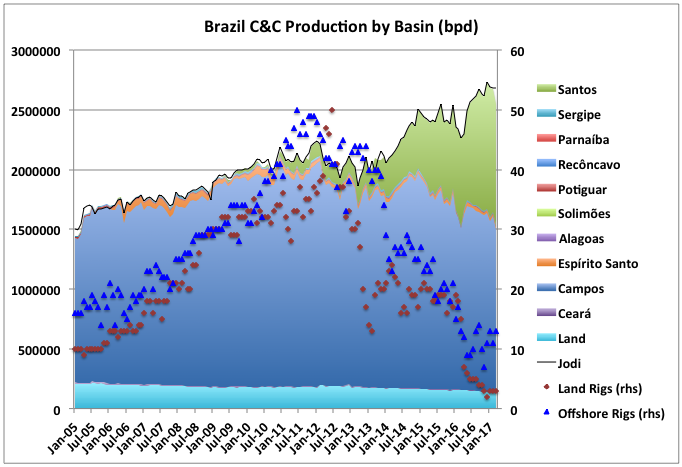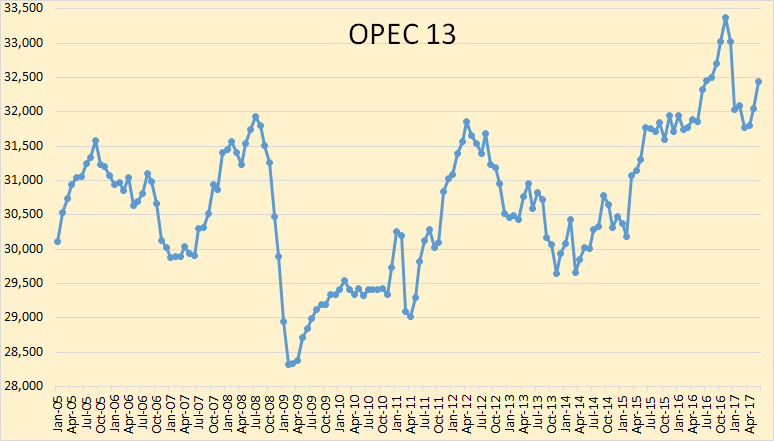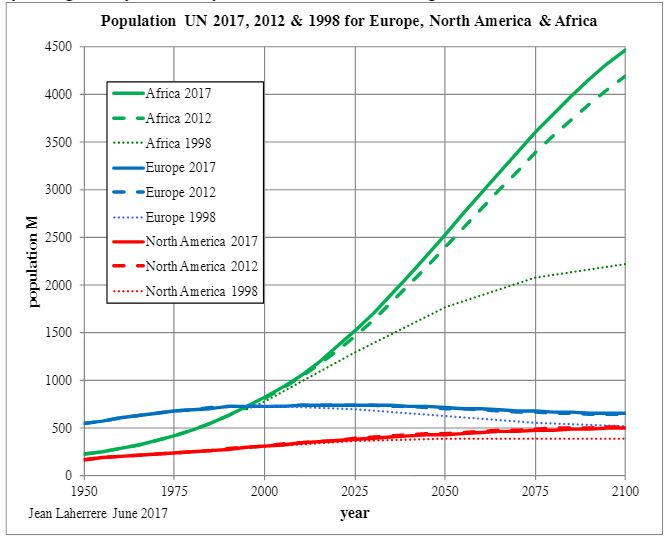Guest Post by George Kaplan
Brazil is a major oil producing country, but in 2016 was still a net importer, though imports dropped significantly and they have been a slight exporter overall so far this year. It is one of the few countries that have consistently grown production over recent years, and possibly the only non-OPEC country that will show overall growth of conventional crude in the ten years to (say) 2022.
Production
Brazil ANP or anp (Agência Nacional do Petróleo, Gás Natural e Biocombustíveis) publishes Excel files for monthly production on all wells. In theory it should be easy to extract field data from these, in practice not so much. The files are downloaded from a database but not always consistently, sometimes in field units sometimes SI, sometimes one month per file sometimes more, around 2010 onshore and offshore was split but naming conventions weren’t always followed, handling of wildcat wells seems a bit arbitrary, and spelling conventions can change. However after more effort than I expected I did download the data and split it by basin and field.
The total production fits Jodi data well except for three periods: 2005 when the reports stated, and doesn’t make much difference; 2010 when ANP split offshore and onshore reporting and the well files are a complete mess; and 2017, which may indicate that some of the data is revised (this should become evident as more releases are made over the next months).


